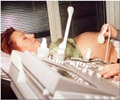People who suffer from major depression can become symptom-free if they are willing to work with their doctors and try various treatments to determine which work best for them.
More than two-thirds of people who suffer from major depression can become symptom-free if they are willing to work with their doctors and try various treatments to determine which work best for them, which may involve taking different antidepressants or adding cognitive therapy to the mix.
The largest study on treatments for depression, led by UT Southwestern Medical Center, found that 67 percent of patients achieved a full remission of symptoms by the end of one to four treatment steps. An overview of the $35 million, six-year study – designated STAR*D (Sequenced Treatment Alternatives to Relieve Depression) and funded by the National Institute of Mental Health (NIMH) – appears in the November issue of the American Journal of Psychiatry.Results showed that the chances of reaching remission were higher after the first and second treatment steps (37 percent and 31 percent respectively), than after the third and fourth steps (14 percent and 13 percent). For those who did improve or remit in fewer treatment steps, lower relapse rates were found during a 12-month follow-up than for those who required more steps to reach remission or improvement.
“There’s good news and not-so-good news,” said Dr. A. John Rush, vice chairman of clinical sciences and professor of psychiatry at UT Southwestern. “The good news is that two-thirds of people can be relieved of their depression if they can hang in there for up to four treatment steps. That’s pretty significant for a tough illness.
“The not-so-good news is that when more steps are needed to get to remission or meaningful improvement, the higher the risk is for having a return of the depressive episode – or a relapse,” said Dr. Rush, the study’s principal investigator.
STAR*D is the first benchmark study to implement specific step-by-step medication treatment guidelines based on patients’ symptoms and medication side effects. This gives clinicians a “measurement-based care” approach to delivering high-quality treatment for depression.
An important feature of the landmark clinical trial is that the 3,671 patients included were treated in “real-world” settings – 41 primary-care and psychiatric clinics around the country – rather than being nonpatient volunteers, as often is the case in such studies. In addition to suffering from major depression, most had other coexisting general medical and psychiatric conditions.
Advertisement
“This report provides a summary of all the steps and a comprehensive view of outcomes from the largest depression trial ever conducted,” said Dr. Madhukar Trivedi, co-author of the study and professor of psychiatry at UT Southwestern. “It offers clear evidence of what happens step-by-step and gives us a good idea of what outcomes will be the following year, if patients continue the same treatment.”
Advertisement
“Depression is a disabling medical condition just like any other medical condition such as diabetes or congestive heart failure,” Dr. Rush said. “The take-home message for patients is to hang in there and stay in treatment, even if several steps and various medications must be tried. Be patient and willing to tell your doctor if a medication isn’t working, if the dosage is bothering you or if you’re having side effects. Collaborate with your physician to find the right medication and dosage for you, and stay on it long enough to give it a chance to work.”
For clinicians, the study emphasizes the need for careful and regular monitoring and evaluation of patients, as well as highlights the critical value of remission as the end objective, Dr. Rush said.
“Remission is the thing you really, really want to try and achieve. And, follow-up is critical,” he said. “The more steps it takes to get better or to remission, the more carefully a patient needs to be followed, because the more likely that individual is to have a relapse.”
While more research is needed, STAR*D offers “clues,” Dr. Rush said, into the types of patients who require longer treatment for depression. These include people who suffer from other chronic medical conditions and/or additional psychiatric disorders, and individuals who have experienced longer and more disabling periods of depression before seeking treatment.
As for the one-third of individuals who didn’t reach remission, possible explanations include:
· There may be some depressions for which medications don’t work.
· Individual biological and genetic differences, as well as life circumstances and other medical conditions, may render some medication treatments ineffective.
· People suffering from long bouts of depression might have been helped earlier in the course of the disease, but may not achieve remission after lengthy chronic depression.
“This study emphasizes the importance of long-term management of this disease,” Dr. Rush said. “The short-term matters, but the long-term matters even more.”
Source-Newswise
SRM








